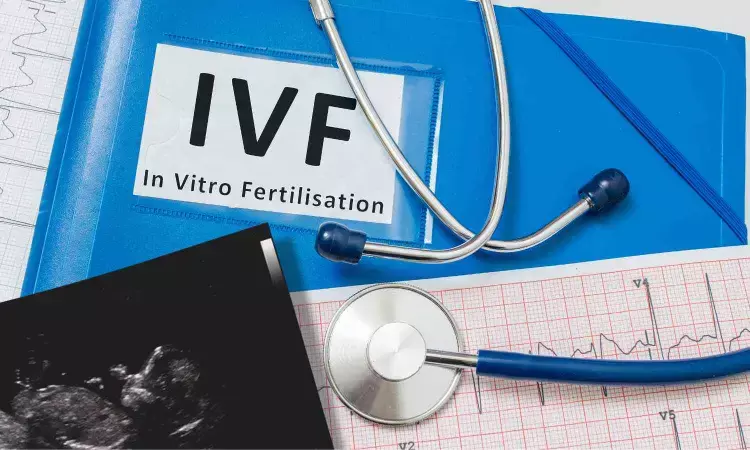- Home
- Medical news & Guidelines
- Anesthesiology
- Cardiology and CTVS
- Critical Care
- Dentistry
- Dermatology
- Diabetes and Endocrinology
- ENT
- Gastroenterology
- Medicine
- Nephrology
- Neurology
- Obstretics-Gynaecology
- Oncology
- Ophthalmology
- Orthopaedics
- Pediatrics-Neonatology
- Psychiatry
- Pulmonology
- Radiology
- Surgery
- Urology
- Laboratory Medicine
- Diet
- Nursing
- Paramedical
- Physiotherapy
- Health news
- Fact Check
- Bone Health Fact Check
- Brain Health Fact Check
- Cancer Related Fact Check
- Child Care Fact Check
- Dental and oral health fact check
- Diabetes and metabolic health fact check
- Diet and Nutrition Fact Check
- Eye and ENT Care Fact Check
- Fitness fact check
- Gut health fact check
- Heart health fact check
- Kidney health fact check
- Medical education fact check
- Men's health fact check
- Respiratory fact check
- Skin and hair care fact check
- Vaccine and Immunization fact check
- Women's health fact check
- AYUSH
- State News
- Andaman and Nicobar Islands
- Andhra Pradesh
- Arunachal Pradesh
- Assam
- Bihar
- Chandigarh
- Chattisgarh
- Dadra and Nagar Haveli
- Daman and Diu
- Delhi
- Goa
- Gujarat
- Haryana
- Himachal Pradesh
- Jammu & Kashmir
- Jharkhand
- Karnataka
- Kerala
- Ladakh
- Lakshadweep
- Madhya Pradesh
- Maharashtra
- Manipur
- Meghalaya
- Mizoram
- Nagaland
- Odisha
- Puducherry
- Punjab
- Rajasthan
- Sikkim
- Tamil Nadu
- Telangana
- Tripura
- Uttar Pradesh
- Uttrakhand
- West Bengal
- Medical Education
- Industry
Natural cycles with properly scheduled oocyte retrieval benefits women with low ovarian reserve undergoing IVF: Study

Free IVF Proposal Gains Momentum in Chhattisgarh
Assisted reproduction technology (ART) is the main method for addressing infertility and attaining pregnancy. Although age is typically acknowledged as the primary determinant of ART success, the cause of infertility and the specific ART treatments employed can also impact pregnancy outcomes. Recent study examined the impact of natural cycles compared to mildly stimulated cycles on embryo quality and pregnancy outcomes for women with low ovarian reserve undergoing IVF treatment. The researchers conducted a retrospective cohort study of 926 cycles at the Guangdong Second Provincial General Hospital between 2017-2021.
Embryo Quality and Pregnancy Rates
The results showed that the pregnancy rate was significantly higher in the natural cycle group compared to the mildly stimulated cycle group (51.8% vs. 40.1%). Natural cycles also had higher rates of available embryos (84.1% vs. 78.6%), high-quality embryos (61.8% vs. 53.2%), and utilization of oocytes (73% vs. 65%) compared to mildly stimulated cycles.
Timing of Oocyte Retrievals
Importantly, the majority of oocyte retrievals in natural cycles (94.9%) were conducted during daytime hours (7am-7pm), with an even higher percentage (96.4%) in cycles that resulted in high-quality embryos. This suggests that natural cycles with appropriately timed oocyte retrieval may be a valuable option for patients with low ovarian reserve.
Conclusions and Recommendations
The researchers conclude that natural cycles can yield significantly higher pregnancy rates, higher rates of available and high-quality embryos, and better utilization of oocytes compared to mildly stimulated cycles in women with low ovarian reserve. These findings indicate that natural cycles with properly scheduled oocyte retrieval may be a beneficial approach for this patient population.
Key Points
1. The study examined the impact of natural cycles compared to mildly stimulated cycles on embryo quality and pregnancy outcomes for women with low ovarian reserve undergoing IVF treatment.
2. The pregnancy rate was significantly higher in the natural cycle group compared to the mildly stimulated cycle group (51.8% vs. 40.1%).
3. Natural cycles had higher rates of available embryos (84.1% vs. 78.6%), high-quality embryos (61.8% vs. 53.2%), and utilization of oocytes (73% vs. 65%) compared to mildly stimulated cycles.
4. The majority of oocyte retrievals in natural cycles (94.9%) were conducted during daytime hours (7am-7pm), with an even higher percentage (96.4%) in cycles that resulted in high-quality embryos.
5. The researchers conclude that natural cycles can yield significantly higher pregnancy rates, higher rates of available and high-quality embryos, and better utilization of oocytes compared to mildly stimulated cycles in women with low ovarian reserve.
6. The findings indicate that natural cycles with properly scheduled oocyte retrieval may be a beneficial approach for women with low ovarian reserve undergoing IVF treatment.
Reference -
Rui-Ying Yuan, Sen Li, Xie Feng, Xiao-Long Li, Xiao-ting Lin, Fu-min Gao, Hai-Jing Zhu, Yong-shi Li, Yan-chu Li & Xiang-Hong Ou (2024) Comparison of embryo quality and pregnancy outcomes for patients with low ovarian reserve in natural cycles and mildly stimulated cycles: a cohort study, Journal of Obstetrics and Gynaecology, 44:1, 2303693, DOI:10.1080/01443615.2024.2303693
Dr Kamal Kant Kohli-MBBS, DTCD- a chest specialist with more than 30 years of practice and a flair for writing clinical articles, Dr Kamal Kant Kohli joined Medical Dialogues as a Chief Editor of Medical News. Besides writing articles, as an editor, he proofreads and verifies all the medical content published on Medical Dialogues including those coming from journals, studies,medical conferences,guidelines etc. Email: drkohli@medicaldialogues.in. Contact no. 011-43720751


